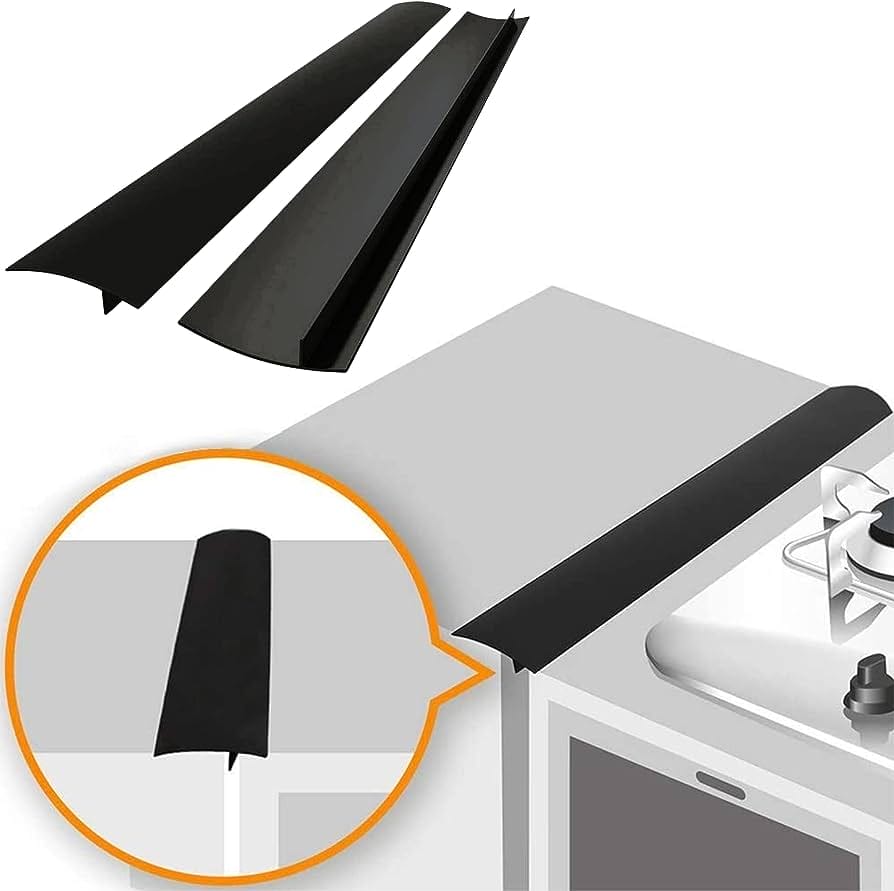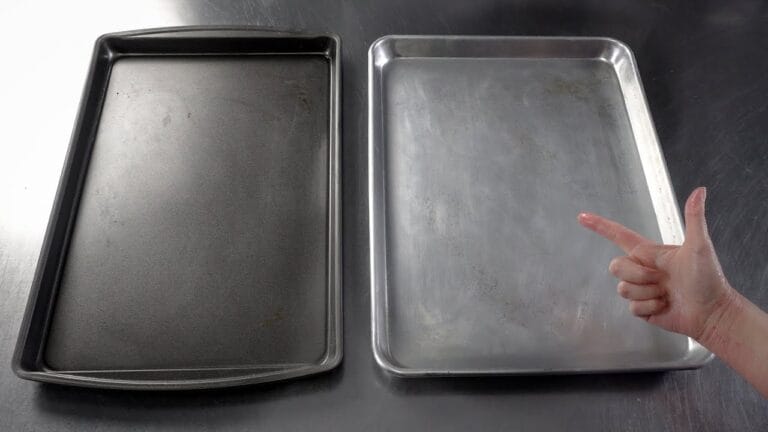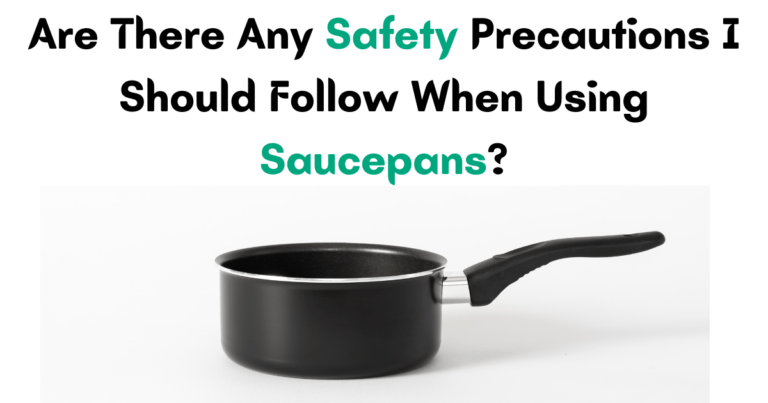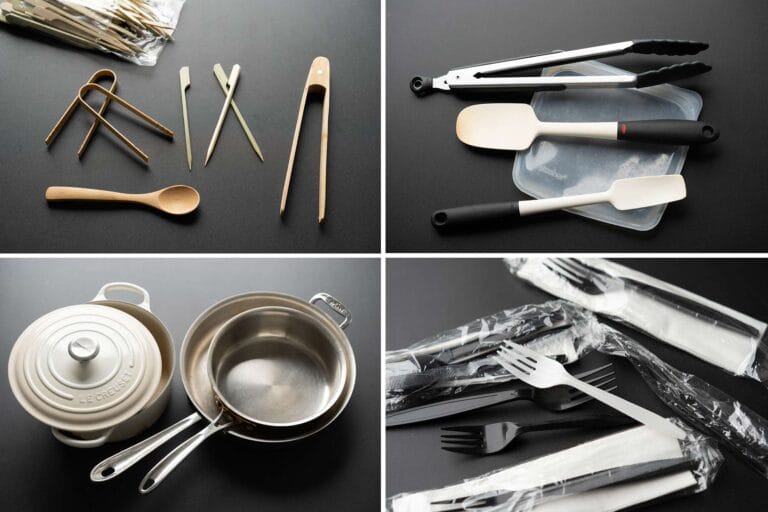
Do you love a perfectly roasted dish? Well, “Mind the Gap: Leave Space Between Items for Even Roasting” is the key to achieving just that! When it comes to cooking, properly spacing your ingredients on the baking sheet is essential for even cooking and delicious results. In this article, we’ll explore why leaving space between items is crucial and how it can make a significant difference in your culinary creations.
You might be wondering, why is it so important to leave space between the items on the baking sheet? The answer lies in the process of roasting. When food items are crowded together, they can trap moisture and prevent hot air from circulating properly. As a result, your food may end up steaming rather than getting that desirable crispiness. By leaving space between the items, you allow the hot air to circulate freely, ensuring an even distribution of heat and achieving that desired golden-brown perfection.
So, how exactly does spacing affect the roasting process? Well, leaving space between items promotes efficient air circulation, which means that each piece of food gets evenly exposed to the heat. This prevents undercooking or overcooking certain parts while others remain underdone. Whether you’re roasting vegetables, chicken, or even cookies, giving them their own breathing room ensures that they cook uniformly, resulting in a delightful balance of flavors and textures.
Now that you understand the importance of minding the gap and leaving space between items for even roasting, get ready to take your cooking skills to the next level. In the following sections, we’ll delve deeper into the benefits of proper spacing and share some practical tips to help you achieve the best results in the kitchen. So grab your apron, preheat the oven, and let’s get started on our journey to culinary perfection!

Mind the Gap: Leave Space Between Items for Even Roasting
Roasting is a popular cooking technique that can bring out the flavors in a variety of foods, from vegetables to meats. However, achieving even roasting can sometimes be a challenge. One way to ensure evenly cooked and delicious results is by leaving space between items on your roasting pan. In this article, we will explore the importance of minding the gap and how it can elevate your roasting game.
The Science Behind Even Roasting
When you place food items too close together on a roasting pan, the heat circulation is hindered. This can lead to uneven cooking, with some items overcooking while others remain undercooked. Leaving space between items allows heat to circulate evenly, ensuring that everything cooks at the same rate.
The Benefits of Leaving Space
1. Even Cooking: By leaving space between items, you create an environment where heat can reach each piece of food independently. This results in consistent and even cooking, ensuring that everything is perfectly roasted from all sides.
2. Crispy Texture: Roasting relies on dry heat to create a deliciously crispy exterior. When items are overcrowded, steam can build up, preventing that desired crispy texture. Leaving space allows the moisture to escape and promotes a satisfying crunch.
3. Flavor Development: When each item has enough space, they have the opportunity to caramelize and develop flavor. Caramelization occurs when sugars in food undergo a chemical reaction, resulting in a rich, browned exterior and enhanced taste. Leaving space maximizes the chances of achieving this flavorful transformation.
By understanding the benefits of leaving space between items, you can ensure that your roasting endeavors yield masterful and delectable results.
Tips for Properly Minding the Gap
1. Use a Large Roasting Pan: Opt for a pan that provides ample space to accommodate your ingredients without crowding them. This will allow air to circulate freely and encourage uniform cooking.
2. Arrange Items Strategically: Be mindful of how you arrange your ingredients to maximize space. Place larger items towards the edges and smaller items towards the center. This will help ensure that heat reaches every piece evenly.
3. Rotate and Flip: To further promote even cooking, consider rotating the pan or flipping the items halfway through the roasting process. This will help compensate for any minor differences in heat distribution and guarantee uniform browning.
By implementing these simple tips, you can make sure that every dish you roast boasts perfection on every plate.
Additional Tips for Perfect Roasting
1. Seasoning: Coat your ingredients with your desired seasonings, such as herbs, spices, and marinades, before roasting. This will infuse the flavors throughout the food and enhance the overall taste.
2. Preheating: Always preheat your oven before placing your roasting pan inside. This helps establish a hot environment from the start and ensures consistent cooking temperatures.
3. Basting: Regularly basting your ingredients with pan drippings or marinades can help keep them moist and add extra flavor. Basting also helps promote even browning and prevents drying out.
4. Resting Time: Allow your roasted items to rest for a few minutes before serving. This allows the juices to redistribute and settle, resulting in juicier and more flavorful bites.
With these additional tips alongside minding the gap, your roasting skills will reach new heights, impressing both yourself and anyone fortunate enough to savor your culinary creations.
Common Mistakes to Avoid
1. Overcrowding the Pan: As discussed previously, overcrowding the pan is a surefire way to hinder the roasting process. Always leave enough space between items to encourage proper heat circulation.
2. Unequal Size: When roasting items of different sizes together, ensure that they are cut and prepared in a way that promotes even cooking. Uniformity in size helps guarantee consistent results.
3. Ignoring Temperature Variations: Familiarize yourself with your oven’s hotspots or uneven heating areas. Adjust the placement of items accordingly to minimize the impact of these variations.
By being aware of these common mistakes and taking the necessary precautions, you can overcome them and become a roasting aficionado.
Time and Temperature Considerations
When roasting, time and temperature are crucial factors in achieving the desired results. Here are some general guidelines:
Poultry and Meat
For poultry and meat, it is essential to cook them thoroughly to ensure safety and to achieve the desired level of doneness. The internal temperature should reach the recommended safe temperature for the specific type of meat being cooked.
It is generally recommended to preheat the oven to 350°F (175°C) for poultry and most meats. However, some recipes may require higher or lower temperatures.
Vegetables
Vegetables often roast best at higher temperatures to achieve caramelization and crispiness. Preheat the oven to 400°F (200°C) for most vegetables. However, different vegetables may require slightly different temperatures and cooking times, so consult specific recipes for accurate guidelines.
Timing and Checking for Doneness
Every oven and recipe can vary, so it is crucial to rely on a thermometer and visual cues to determine doneness. Use a meat thermometer to check the internal temperature of meat, ensuring it reaches the recommended level for safety and desired doneness. For vegetables, check for golden-brown color and a tender texture. Adjust cooking times accordingly.
Embrace the Gap, Elevate Your Roasting
Roasting can be a delightful and rewarding cooking technique when executed correctly. By minding the gap and leaving space between items, you allow heat to circulate evenly and achieve perfectly roasted dishes. Remember to follow the tips, avoid common mistakes, and pay attention to time and temperature considerations for exceptional results. Embrace the gap, and let your roasting skills shine!
Key Takeaways: Mind the Gap – Leave Space Between Items for Even Roasting
- Leaving space between items promotes even heat distribution while roasting.
- Avoid overcrowding to ensure each item cooks evenly.
- Spacing prevents items from steaming, allowing them to develop a crispy exterior.
- Proper spacing facilitates air circulation, resulting in a more consistent roast.
- Leaving gaps between items allows heat to reach all sides, improving flavor and texture.
Frequently Asked Questions
Are you curious about the importance of leaving space between items for even roasting? Check out these commonly asked questions:
1. Why is it important to leave space between items when roasting?
Leaving space between items when roasting is essential for achieving even and consistent cooking. When food items are overcrowded on a baking sheet or in a roasting pan, they can end up steaming instead of roasting. This can lead to uneven cooking, with some parts being undercooked and others overcooked. By leaving space between items, hot air can freely circulate, allowing for even heat distribution and browning. This ensures that all items roast to perfection, with a nice crispy exterior and a moist interior.
Additionally, having enough space also helps prevent the buildup of steam, which can result in soggy food. Proper air circulation allows moisture to escape, promoting a crisp texture. So, whether you’re roasting vegetables, meats, or poultry, be sure to mind the gap for deliciously even results!
2. How much space should I leave between items when roasting?
The amount of space you should leave between items when roasting depends on the specific dish, but as a general rule of thumb, aim for about 1-2 inches of space between each item. This allows the hot air to circulate adequately, ensuring consistent cooking. If the items are too close together, they can create steam, hindering the desired browning and texture.
Remember to consider the size and shape of the items as well. If you’re roasting larger pieces, such as chicken drumsticks or potatoes, you may need to spread them out further to ensure proper browning on all sides. It’s better to slightly overcrowd smaller items like Brussels sprouts or cherry tomatoes, as they have less surface area compared to larger vegetables or meats.
3. Can I stack items when roasting?
It’s generally not recommended to stack items when roasting, as this can prevent proper air circulation and lead to uneven cooking. Stacking items too closely together can create steam and result in soggy food. However, there are a few exceptions to this rule.
One exception is when you’re making a dish that requires ingredients to be layered, such as a lasagna or a casserole. In these cases, it’s important to follow the recipe instructions, which usually account for the layering and provide guidance on maintaining even cooking. Another exception is when using a roasting rack, which elevates the items, allowing air to circulate underneath. This can help ensure even browning and cooking, even if items are stacked on top of each other.
4. What are the benefits of leaving space between items when roasting?
Leaving space between items when roasting offers several benefits. Firstly, it promotes even cooking by allowing hot air to circulate freely around each item. This results in consistent browning, texture, and doneness throughout the dish. Secondly, proper spacing prevents the buildup of steam, which can make food soggy. Instead, it allows moisture to escape, creating a crispy exterior.
Moreover, leaving space between items also helps prevent overcrowding, which can lead to sticking and prevent the items from roasting evenly. By giving each item enough room, you ensure that they have an equal opportunity to develop that desirable golden-brown color and delicious flavor. Ultimately, properly spacing items when roasting enhances the overall quality of the dish and ensures a more satisfying culinary experience.
5. Are there any other cooking methods that require spacing between items?
While leaving space between items is particularly important when roasting, it’s also beneficial for other cooking methods. One example is when sautéing or stir-frying. Overcrowding the pan can result in steaming the ingredients instead of allowing them to sear and caramelize. To achieve that desirable crispy texture and even browning, it’s crucial to give the ingredients enough room to spread out.
This principle also applies to grilling. If the grill grates are overcrowded, it can lead to uneven cooking, with some areas being charred while others remain undercooked. Providing ample space between items on the grill ensures that heat is distributed evenly and that each item is cooked to perfection. So, whether you’re roasting, sautéing, or grilling, remember that leaving space between items is key to achieving delicious, evenly cooked results.
Summary
Roasting food evenly is important for a delicious meal. Leaving space between items helps achieve this.
When food is crowded, it can cook unevenly, leading to some items being overcooked and others undercooked. By leaving gaps, you give each item enough space to cook properly.
So, remember to spread out your items on the baking sheet or grill, leaving room for air to circulate. This will ensure that everything cooks evenly and results in a tasty meal for everyone to enjoy!






